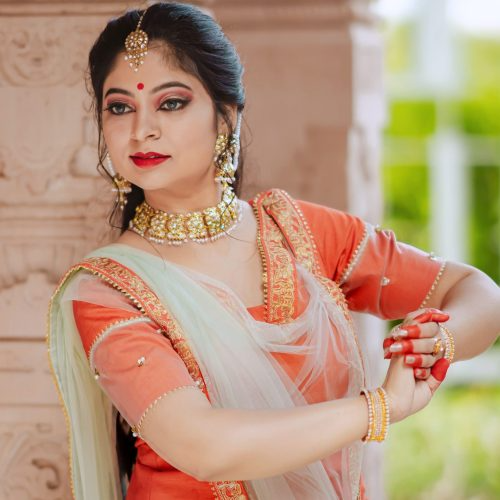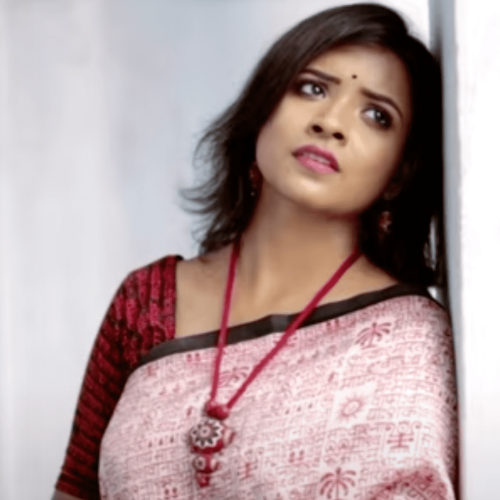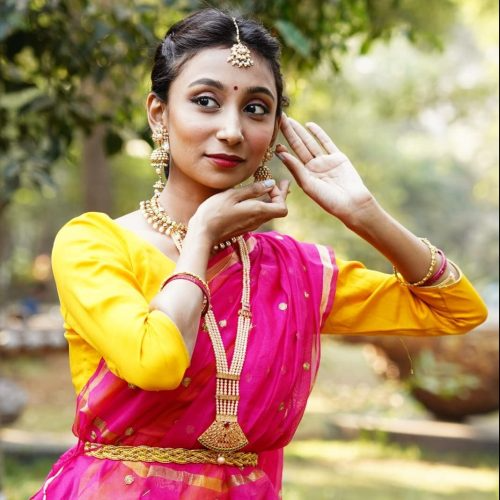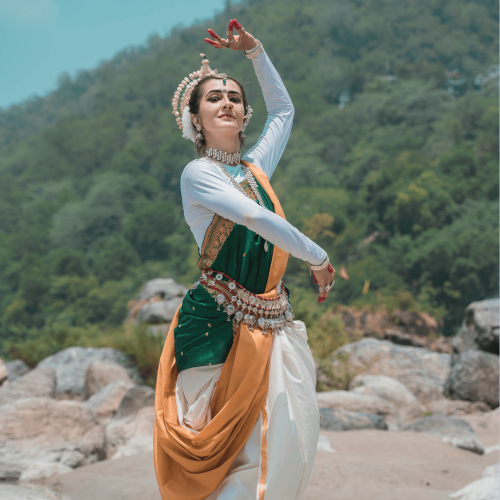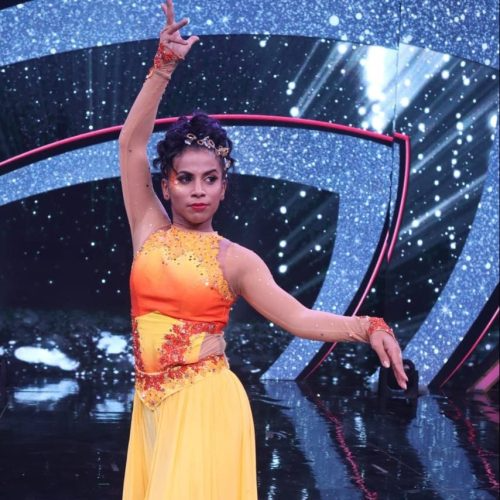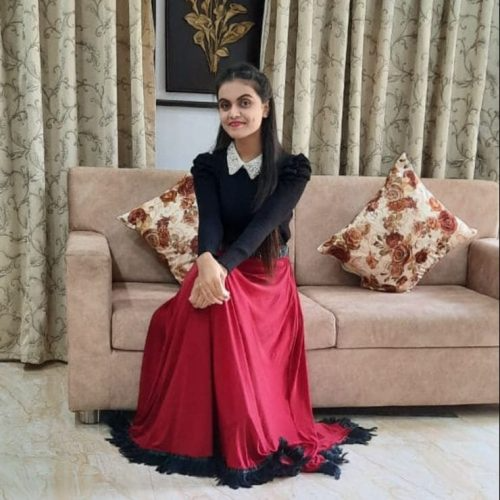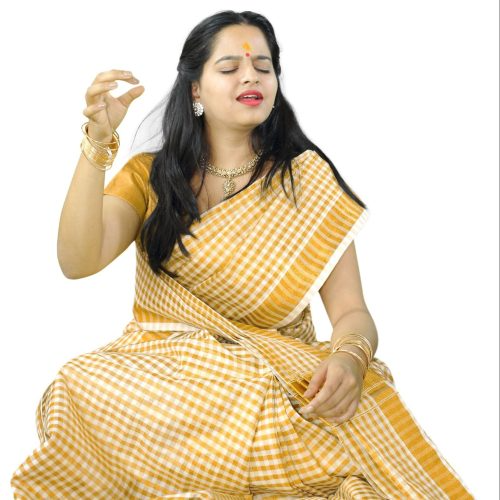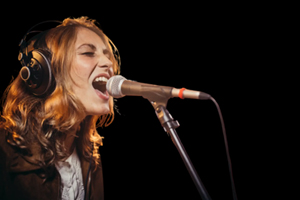
Top 10 Famous Indian Folk Dances
- April 23, 2025
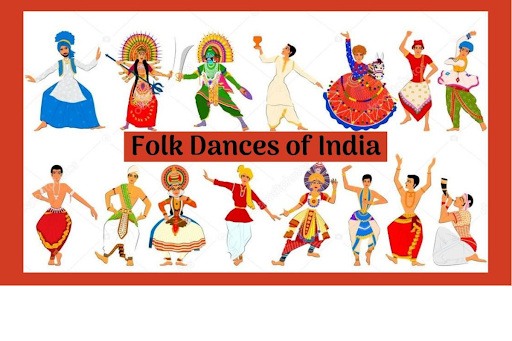
A reservoir of timeless melodies, ranging from several classic and contemporary songs, Bollywood has become one of the most sought-out sources for discovering the best classic Hindi songs. Many of Bollywood’s tracks, especially the simpler ones, are ideal for anyone venturing into singing. They’re not just easy to follow but also come with the charm and emotion that Bollywood is known for.
Whether you’re gearing up to impress your friends at karaoke or simply practicing your vocals in the comfort of your room, this list of Bollywood’s top 10 easy songs will help you start singing with confidence and style.
In this blog, let’s explore various folk dance forms of India.
List of Top 10 Famous Indian Folk Dances
- Lambadi Dance
- Bihu Dance
- Santhal Dance
- Kummi Dance
- Garba Dance
- Bhangra Dance
- Lavani Dance
- Nati Dance
- Ghoomar Dance
- Grida Dance
1. Lambadi Dance

Originating from Andhra Pradesh in “Anupu” village, this dance is performed by the adivasi women as a form of showing gratitude to nature. Typically performed by the Lambadi community during harvest season, this dance has around 30 Banjari women performing in colorful costumes while handling metal pots with one hand. Intricate footwork combined with flowy hand and waist movements is a characteristic of this dance. Typical banjari tunes, with the typical use of the words “Banjaro” or “Banjara,” define the music of lambada dance, one of the folk dance forms of India.
Costumes include colourful “Ghagra-Cholis” and traditional bangles for female dancers and ‘Dhoti-Kurta’ for male dancers.
Performed mainly during festivals such as Holi and Diwali, Lambadi dance has earned its place in the Indian folk dance list.
2. Bihu Dance
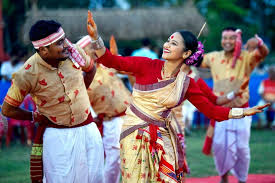
One of the prominent folk dance forms of India, Bihu originates in Assam and symbolises the advent of a new year. Known for its collective form, Bihu has male and female dancers dancing in separate groups, with the women forming circles or lines and men forming serpentine figures. ‘Setu’ (different combinations of drum beats) are typical of this dance. Dance is performed using hands, neck, and waist, moving to these combinations.
Common instruments used for this well-known folk dance form of India are horns, drums, and rills, with female dancers donning traditional Assamese sarees, earning Bihu a place in the Indian folk dance list.
3. Santhal Dance
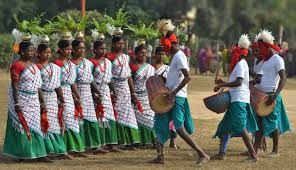
One of the most attractive folk dance forms of India, Santhal has its origins in the states of West Bengal and Jharkhand. Performed by the ‘Santhali’ community, this dance is included in the Indian folk dance list as a form of devotion and gratitude to their God, ‘Thakurji’.
Performed by linking hands and dancing in semicircular or circular motions, the tune for the dance is supplied by instruments such as the flute, cymbals, and drums. The use of natural elements in the costumes, such as flowers and leaves, is seen, reflecting the community’s love for nature.
4. Kummi Dance

Included in the Indian folk dance list from the land of Tamil Nadu, ‘Kummi’ is performed by Tamil people from all over the South.
Women dance during festivals in varying styles of this dance, namely “Deepa Kummi,” “Kadir Kummi,” “Kulavai Kummi,” etc. Danced in circles and induced with clapping for rhythm, the songs for this folk dance form of India are sung by a lead singer, accompanied by a chorus.
5. Garba Dance
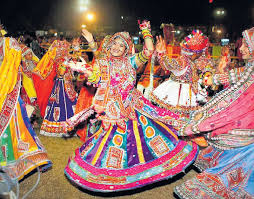
One of the most popular folk dance forms of India, Garba has its traditional roots in Gujarat. It is danced around ‘Garbo’, an earthen pot with a lighted lamp that symbolizes the “female divinity” (Shakti). Performed during the Navratri festival in India, the dance is performed in circular motions with subsequent claps for rhythm. Swaying side-to-side, bends and rotations are characteristics of this dance.
Using the ‘Khemta’ taala with six beats accompanied by Dholak, the dancers make use of ‘Dandiyas’ in the modern versions of Garba. Ghagra-Choli and Dupatta in vibrant colors donned by the dancers with attractive jewellery bring this folk dance form of India to life.
6. Bhangra Dance
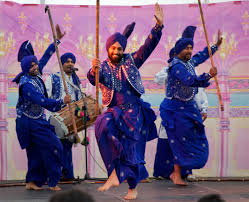
Coming from the lands of Punjab, Bhangra is performed at the time of harvest as a form of celebration for the abundance of nature. An important part of the new year celebrations (baisakhi), Bhangra is included in the Indian folk dance list for its energetic and attractive form.
Dancing in circles on the beats of Dhol, lifted hands, and high jumps and movements with one foot lifted in the air are characteristic of this folk dance form of India. Words such as “Balle Balle” and “Hadippa,” paired with actions to show daily activities of farmers, define the energy-infused Bhangra.
7. Lavani Dance
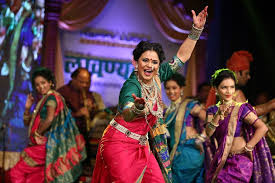
A renowned dance from the state of Maharashtra, famous for its colorful, vibrant costumes and attractive expressions, Lavani is an integral part of the Indian folk dance list. Derived from the word ‘Lavanya’ meaning ‘Beauty’, Lavani is sensual in nature. Gaining spotlight during the Peshwa Reign, Lavani is performed to the beat of ‘Dholaki’.
Complex footwork and intricate expressions define this folk dance form of India, performed with rapid circular motions and sensuous movements. Accompanied with ‘Cymbals’ and ‘Tuntuna’, Lavani is performed accompanied by the singing of the song, also called the ‘Lavani’, with the female dancer donned in a typical Marathi nine-yard saree and heavy, attractive jewelry. Lavani is one of the most attractive folk dance forms of India.
8. Nati Dance
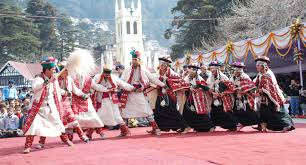
Native to the Central and Western hills and famously attributed to the state of Himachal Pradesh, the Nati dance is also known as ‘Dev Nati’ dance. Known as the ‘largest folk dance’ by the Guinness World Records, Nati is included in the Indian folk dance list as being performed in significant festivities, such as fairs and marriages.
Although restricted to male performers in the past, it is performed by women in the contemporary era as well, with males dressed in designed caps and tunics called ‘Cholas’. Female dancers wear ghagras, cholis, or churidar pyjamas, paired with jewellery known as ‘Chanki and Tunki’, made of gold and silver. Dhol, ‘Nagara’ and ‘Shehnai’ are commonly used to provide rhythm to this folk dance form of India.
9. Ghoomar Dance
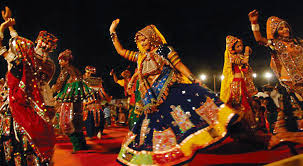
Attributed to the land of Rajasthan, Ghoomar is a part of the Indian folk dance list for its characteristic ‘ghoomars’, i.e., twirling movements and rapid movements in and out of wide circles.
Performed traditionally by a newly married bride in her new home, this folk dance form of India is also performed during special festivities, such as weddings and religious festivals.
Some famous Ghoomar songs include ‘Gorband’, ‘Rumal’ and ‘Mor Bole Re’.
10. Grida Dance
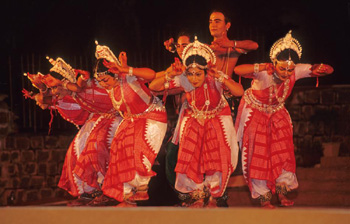
Originating in the state of Madhya Pradesh, the Grida dance is a part of the Indian folk dance list. Performed in groups and symbolizing the importance of communities, the dance sees a merge of people from various villages who come to celebrate through performing the dance.
Performed during the harvest of the Rabi crop, this folk dance form of India is divided into 3 parts, namely Sela, Selalarki, and Selabhadoni. The slow movements in Sela, rising to the fast-paced ones of Selalarki, finally climax to the rapid swaying of bodies for the final part i.e., Selabhadoni, making it a unique folk dance form of India.
Conclusion
Indian folk dances are windows into the spirit of a rich and varied society. Every dance, with its own beat, costume, and narrative, captures the spirit of the community to which it belongs, becoming customs that unite us as a community. These dances provide as a reminder of our origins, culture, and the delight of group celebration.
Related Blogs
- All Posts
- Dancing
- Folk Dance


